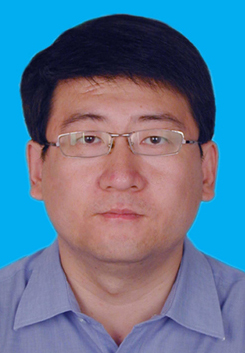WANG Qiang
Date:2015-10-10

Name: Wang Qiang
Title: Associate Professor
Address: Room 211, Research Building, Institute of Apicultural Research, CAAS, Xiangshan, Beijing, China, 100093
Tel: +86-10-62597285
Email: Beeprotect@yeah.net
Brief Introduction:
Wang Qiang (Associate Professor), who mainly engaged in honeybee pathology and toxicology research. Currently work is at the interaction relationship between Nosema spp. and Honeybee such as the immune response of honeybee against pathogen infection. In recent 10 years, he has published more than 41 papers, and 10 of these are first author or correspondent author. And 2 achievements won the provincial awards.
Education Background:
1991.09-1995.07: Bachelor in Plant Protection, Beijing Agricultural University.
2001.09-2004.07: Master in Special Economic Animal, the Graduate School of Chinese Academy of Agricultural Sciences (GSCAAS).
Research Area:
1. Molecular mechanism of infection of Nosema spp. to honeybee
2. Immunized response of honeybee against pathogen
3. Diagnosis technology of honeybee’s pathogen based on Immunization.
Hiring graduate students:
1. Molecular mechanism of infection of Nosema spp. to honeybee
2. Immunized response of honeybee against pathogen
3. Diagnosis technology of honeybee’s pathogen based on Immunization
Awards:
Research in species identification and management of honeybee mites in China. 2011. Beijing Science and Technology Award. Zhou Ting, Wang Qiang, Dai Ping-Li, Sun Ji-Hu, Yao Jun, Luo Qi-Hua, Wang Xing, Wu Yan-Yan, Xu Shu-Fa.
Patents:
A device used between super and hive. 2013. China patent number: ZL2013201766822
Publication:
1. WANG Qiang, ZHOU Ting, WANG Yong. (2010). Construction of Integrated Control System to Honeybee Diseases and Pest Insects in China. Research of Agricultural Modernization. 31(5), 600-603.
2. YANG Jun, ZHOU Wei, ZHOU Ting, WANG Qiang*, DAI Ping-Li, WU Yan-Yan. (2012). The detection method of intracellular Ca2+ ion concentration of brain neurons of honeybee Apis mellifera ligustica. Chinese Journal of Applied Entomology, 49(5), 1167-1171.
3. WANG Qiang, DAI Ping-li, WU Yan-yan, ZHOU Ting?. (2013). Analysis on the Diagnosis and Control Status of Honeybee Diseases and Pests in China. Journal of Agricultural Science and Technology, 15(4): 97-101.
4. Zhang Jian-Yan, Dai Ping-Li, Qu Ying-Ping, Wu Yan-Yan, Zhou Ting, Chu Yan-Na, Wang Qiang*. (2015). Germplasm distribution of Nosema spp. in Apis mellifera in China. Chinese Journal of Animal and Veterinary Sciences.
5. DAI Ping-li, ZHOU Ting, DIAO Qing-yun, WANG Qiang*, WU Yan-yan. (2013). Identification of Varroa Mites Infecting Apis mellifera . Progress in Veterinary Medicine. 34(7): 74-76.
6. DAI Ping-Li, WANG Qiang, SUN Ji-Hu, LIU Feng, WANG Xing, WU Yan-Yan, ZHOU Ting*. (2010). Effects of sublethal concentrations of bifenthrin and deltamethrin on fecundity, growth, and development of the honeybee Apis mellifera ligustica. Environmental Toxicology and Chemistry, 29(3): 644-649.
7. DAI Ping-Li, WANG Qiang, SUN Ji-Hu, Liu, F., Wang, X., Wu, Y. Y., Zhou, T. (2010). Effects of sublethal concentrations of bifenthrin and deltamethrin on fecundity, growth, and development of the honeybee Apis mellifera ligustica. Environmental Toxicology and Chemistry, 29(3), 644-649.
8. LUO Qi-Hua, ZHOU Ting, WANG Qiang, DAI Ping-Li, WU Yan-Yan, SONG Huai-Lei. (2011). Identification of Tropilaelaps mites Infesting Apis mellifera in China. Apidologie, 42: 485-498.